I arrived back in Kohima on the 20th Dec after one of the least painful journeys experienced. The 10 seater sumo I booked only had one other passenger booked from Mokokchung to Kohima, and despite the driver’s best efforts, he was unable to recruit any other passengers. Consequently it was like being in a private vehicle, with none of the ‘squeeze’ I was used to in these journeys. Although it took just four hours, much quicker than the bus on the way up. Everyone was leaving Kohima for Christmas in the villages.
Soon I was in Nino’s city accommodation and having a tea with her and Crebo
. We discussed my trip and the experience in Tuensang and my plans for the next few days and Christmas. With the evening drawing in when ventured out for a meal at a local hotel which was warm and tasty.
I then collapsed when we got back to the apartment into bed at 7.30pm exhausted. The next morning I was up early after a good sleep and after breakfast went out around Kohima to buy a ticket to Khonoma and do some chores. the bus station was its usual dusty, smelly chaotic self and I was soon told to return at 12.00, when the appropriate ticket seller would start work.
After visiting the bank, I had several futile attempts to find a working internet cafe and then decided to visit the spice market whilst I waited for 12.00am. The spice market was maniac with Christmas shoppers, whilst the sports ground in the middle of the market was taken over by a huge market, with many traders selling second clothes amongst the dirt and fine yellow dust of the sports track.
Back at the bus station just before 12,00 I was informed the bus was sold out and the following days bus cancelled. I had wanted to go to Khonoma since Dieter went and Nino had recommended it, so now I realised taxi was the only option left, before public transport closed for Christmas
.
At the taxi stand I managed to find a taxi that was not wanting too higher fair, and booked him and then headed to the WW2 Cemetery at the site of the Battle of Kohima in 1944. The cemetery was undergoing some renovations, so there were workmen everywhere, plus some Indian tourists, who asked to take my photographs amongst the gravestones (somewhat disrespectful). Otherwise it was a moving experience seeing the rows and rows of British soldiers graves, the Muslim allies graves, the Gurka graves and the one Naga grave. At the far end was the memorial to the Indian Hindu fighters who had been cremated and then in the centre was the original tennis court around which the fighting took place and a large monument. as the weather was not so great I hoped to come back over Christmas when I hoped the Indian tourists and the workman had left.
The plinth at the front was the most unforgettable moment, with the famous inscription “when you go home tell them of us and say for your tomorrow, we gave our today
.”
The taxi arrived ion time and 40 mins later we drove into Khonoma from a long dusty dirt road. There i was met by Michael, a local “social worker” or community worker as I would describe him and he accompanied me to Meru’s Cottage where I was staying with Auntie. Auntie was in her 70s and had a visiting home help who did the cooking and spoke some English.
Aunties house was extremely welcoming and very comfortable. Upstairs in the wooden building she had two rooms, one with a balcony over looking the village. I took this one. Dieter & Dominique warned me it was cold but I was still somewhat unprepared. Ongoing power cuts did not help, but seven blankets told the worst off the chill.
I agreed with Michael that I would have one relaxing day to catch up with my blogs and some work I had promised Nino, before embarking on a village walk on the Sunday
. I was particularly keen to learn about British history prior to WW2 when the famous battle of Khonoma 1879 took place. Michael agreed and I settled into auntie’s hospitality. I did manage a small break from blog writing and walked through the paddies and fields that surround the Khonoma hill. This was also interesting seeing the variety of vegetables that were being cultivated in the terraced paddies. These terraces were constructed with stones and some were well over one hundred years old. From a distance they descended down the valley to towards the hill top town like giant steps and were very picturesque. What was most unusual was the number of monoliths that surrounded some of the paddies and lined the pathways. These monoliths are used to commemorate relatives and the dead and was something that I had no witnessed in other villages in my Nagaland travels.
After another cold night, which started with a 7.30pm bedtime (it was so cold), I met Michael who took me around the town. We saw the churches empty and the villagers leave dressed in their best Angami shawls. Khonoma is a pivotal town in Nagaland and produced some of the regions fieriest warriors and some of its best known statesmen including A.Z. Phizo, the former leader of the Naga National Council 1950-90. These people were commemorated with large megaliths by the town roads or (for those warriors who were the most fierce) with individual circles of stones inside the individual Kells
. These stone circles were on this Sunday lined with old men discussing topics of the day after their church visits.
As we went through the town, Michael pointed out the Naga gates, decorated with full moons and drinking horns. These were erected in 1983 replacing the originals. I asked if I could see these and was taken to see the original gates, made from one huge piece of wood with the same designs, dated 1829. Further on we were invited into a house for tea (as I was in Longsa) and then we visited a well preserved Morong that was still being used. I was unaware that each Morong had an owning family that basically rented out the communal area at the front and the boys dormitory. Both Morongs we visited were still being frequented by the village men. Fires were still burning in the communal areas where oral histories of the village were handed down, issues debated and anyone who stood up had a right to be heard. the dormitories had four resident boys and then two still waiting to return to their families for Christmas. they were sleeping on a huge communal bed made from a large piece of wood, polished by sleeping bodies over the centuries. It put my whinging of “no mattresses” in context. Then Michael introduced me to the huge tall Angami man who had carried the huge gun during the Hornbill festival, of which I had taken several photos. I had no idea this huge gun, displayed in another Morong had been handmade
. “My ancestors called it a fire stick,” he added. Michael also told me that several had a habit of exploding in the gunman’s hands during a fight!
However what I really wanted to know about was the Battle of Khonoma in 1879 between the British and the Angami Nagas of Khonoma. I did not know about this battle until recently, but again it seems that I am not alone, for many British people are unaware of this battle and the Naga people for that matter. The British first encountered the Naga tribes in 1832. But it was not until 1944 when the British first came up against the villagers of Khonoma who quickly displayed their ferocious warrior for which they would become notorious.
Two subsequent skirmishes in 1849 and 1850 confirmed the villagers reputation, before in 1879, Deputy Commissioner Damant was killed in Khonoma. The village warriors followed this attack by laying siege to the British garrison at Kohima. After the garrison was relieved, a force of over 3000 men together with 50 elephants and many horses to pull guns and ammunition was dispatched to Khonoma (after being re-routed from the journey to fight in Afghanistan) to bring the village under British control.
The attack was delayed under General Nation’s instructions which enabled the warriors of Khonoma to prepare some very strong defenses and in the process destroy some 400 village homes. The battle was by all accounts particularly savage, with plenty of casualties on both sides. Eventually superior numbers started making a difference and the Angami Villagers had to retreat into a mountain fort (which Michael showed to me). A siege ensued for 4 months until a peace was brokered in March 1880 and eventually the British allowed the villagers to return to Khonoma.
The peace treaty that concluded after this battle is always sited by the Nagas as an illustration of their independence. For although the treaty (an oral treaty, insisted on by the Naga elders) recognised British administration in some south eastern parts of Nagaland, most of the country was confirmed as an “Excluded” or “Unadministered Area” until 1947. The treaty also ensured the loyalty, immense help and relief during the siege of Kohima that the Nagas gave the British during the Japanese invasion. This was in the face of terrible Japanese intimidation.
Michael introduced me that day to Kaka Iralu, the author of the Naga Saga, which details the “historical account of the 62 year Indo-Naga war”. A large, passionate and intelligent man, he has an engaging personality and our two hour meeting was a highlight of my trip to Nagaland. He is also one of Khonoma’s sons.
He explained the above history of the British in Khonoma, plus “the British betrayal” in allowing a sovereign Nagaland to be annexed by a newly independent India in the 1950s, especially after all the help the British had received in 1944.
He also detailed why he believes the Naga people are a unique people. He and Michael gave four reasons, the first being the sovereign independence of all Naga villages. I originally believed this was held by the 16 tribes (or the 66 Naga tribes that there are in total in both India and Burma), but Kaka explained that this was not the case and that each village was sovereign and run by the elders. Each village was the entity that agreed on treaties and alliances (as witnessed by the one between the British Empire and Khonoma in 1880) and the tribes were never involved. Secondly he mentioned the land share system of inheritance, whereby a man would be entitled to land from each of his family, his clan, his Kell (groups of clans) and from the village. Thirdly by the system of vengeance in which each village warrior was expected to avenge a colleagues death and this would be held against all village males if this vengeance was not carried out. The fourth Michael added was that each village was never concerned with subjugating another village. Consequently empire building was out of the question.
Kaka went on to further outline the problems in Nagaland today, the current position with India, the UN and Britain. This was all fascinating, but I was sorry to learn that his family had paid a heavy price as his wife and daughter were in political asylum in Norway. He kindly gave me a signed copy of the Naga Saga.
With darkness descending, it was time to say goodbye and wish everyone good luck and I returned to Auntie’s cottage to prepare for the cold and some dinner. The next day I returned to Kohima and Nino’s apartment.
Kohima was already in Christmas mood with many businesses closing and a giant exodus to the villages underway. Unfortunately my plans to return to the War Cemetery were thwarted as it closed for Christmas without warning. It was a good job I had rushed around before Khonoma.
I managed to get a few things done before Christmas Eve, but finding an operating internet was not one. On Christmas Eve I returned to Kigwema, as Nino had found me a homestay that was prepared to host me over Christmas. This was very nice as I had expected to spend Christmas alone.
I moved into a house close to Nino’s guesthouse and then Nino asked me if I would consider playing Santa Claus for the local Kell’s children on Christmas Day. “Of course,” I replied and Crebo immediately started creating a costume. That evening my host family produced an enormous meal and again I was in bed early to escape the cold. I also had a big sleep.
Christmas Day started quietly, with a local breakfast of sticky rice and fried eggs. Then after 10.00am Crebo came around for my Santa outfit fitting and then at 11.30am I was dressed and ready and smuggled around to the Church’s front door. The children me with a mixture of laughter, screams of delight and complete terror. Naga children do not get presents, i was told so it was just chocolate to hand out and the occasional “ho ho ho” that was required. I was soon finished and I told the kids “I must leave to get to London on time,” which they seemed to accept. A few looked at me incredulously when I turned up in my normal clothes 20 mins later at the village BBQ.
Nino organised a village BBQ, despite the cold, in front of church and everyone enjoyed a Naga Christmas meal of Pork, chili vegetables, squash, spinach and plenty of rice. No alcohol of course. I met the Baptist pastor, several villagers and Nino’s family and it was very welcoming despite the cold. Back at my host family, they were all departing for the afternoon service, so I had a quiet time.
In the evening I went over to Nino’s for a drink with her family and then I was back for an early night. The next day I was off. I had a eleven hour journey by bus and train to Guwahati, and arrived back at Raj’s late at night. Raj was unfortunately not there, he was back on a ship, but I got everything done and caught my plane back to Kolkata on the 28th Dec. Everything was coming to a quick conclusion in India.
I just had 48 hours in Kolkata before I left India and decided that I was going to do what I should have done in September and concentrate on my photography and the street photography. I had signed up with Manjit, a photographer who ran street photography courses, and we met up at a local market the following morning at 6.30am.
The market was chaotic, but fabulous with some much early morning activity with many areas of the gloomy market lit by bright multi coloured lights. It was fabulous. The following day we also met up again, this time to cover the old central district of Kolkata, home to the Christian, Chinese and Jewish communities. This was equally interesting and a great counter balance to the first day.
Suddenly I was on the way to the airport and with a ver welcome Emirates upgrade, left India in business class. An overnight stay in Dubai was a welcome rest and lovely re-introduction to the delights of sleeping on a mattress. I was though too tired to see the new year celebrations, and left the next morning on the flight to London.
Back in London after a hair raising landing during high winds and driving rains, I felt like I had not even been away. “Role on part 2 of this journey,” in three weeks.
This blog will now take a well earned three week holiday and start again on 1st February when I arrive in Ethiopia.
Happy New Year.
Battles, Monoliths, Street Photography, Home
Wednesday, January 01, 2014
 Dubai, United Arab Emirates
Dubai, United Arab Emirates
Other Entries
-
18Maharajas, Lakes, Vintage Cars and Birds
Sep 15108 days prior Udaipur, Indiaphoto_camera5videocam 0comment 0
Udaipur, Indiaphoto_camera5videocam 0comment 0 -
19Big Moustaches, Street Food & Big Forts
Sep 20103 days prior Salawas, Indiaphoto_camera6videocam 0comment 0
Salawas, Indiaphoto_camera6videocam 0comment 0 -
20Psychotic Cows, Nagas, Omar Sherif & Desert Forts
Sep 2697 days prior Jaisalmer, Indiaphoto_camera4videocam 0comment 0
Jaisalmer, Indiaphoto_camera4videocam 0comment 0 -
21Special Blog: Seva Ram & Jitu Solanki
Oct 0192 days prior Bikaner, Indiaphoto_camera5videocam 0comment 0
Bikaner, Indiaphoto_camera5videocam 0comment 0 -
22Public Speaking, Painted Havelis and lots of rats!
Oct 0489 days prior Mandawa, Indiaphoto_camera8videocam 0comment 0
Mandawa, Indiaphoto_camera8videocam 0comment 0 -
23National Parks, Road Rage, Drunks & a Tiger!
Oct 1281 days prior Bharatpur, Indiaphoto_camera4videocam 0comment 2
Bharatpur, Indiaphoto_camera4videocam 0comment 2 -
24Mosques, Cremations, Festivals & Dhal
Oct 2172 days prior Varanasi, Indiaphoto_camera7videocam 0comment 0
Varanasi, Indiaphoto_camera7videocam 0comment 0 -
25Nepal, trekking, Cold, Everest and Gurkas
Oct 2865 days prior Kayakatta, Nepalphoto_camera4videocam 0comment 0
Kayakatta, Nepalphoto_camera4videocam 0comment 0 -
26Karmi Farm, Sherpa Tenzing, Mr Happy and Momos
Nov 0557 days prior Darjeeling, Indiaphoto_camera4videocam 0comment 0
Darjeeling, Indiaphoto_camera4videocam 0comment 0 -
27Rhinos, Armed Guards & Posing For Photos
Nov 1448 days prior Kaziranga National Park, Indiaphoto_camera5videocam 0comment 0
Kaziranga National Park, Indiaphoto_camera5videocam 0comment 0 -
28Spiders, The Kharsi, Archery and Bad Driving
Nov 2042 days prior Cherrapunji, Indiaphoto_camera5videocam 0comment 0
Cherrapunji, Indiaphoto_camera5videocam 0comment 0 -
29Monpas, Sumo, Yak Butter Tea & Indian Army
Nov 2438 days prior Tawang, Indiaphoto_camera7videocam 0comment 0
Tawang, Indiaphoto_camera7videocam 0comment 0 -
30Uncles, Nuns, Bridges, Red Rice and Gompas
Nov 2735 days prior Sakti, Indiaphoto_camera5videocam 0comment 0
Sakti, Indiaphoto_camera5videocam 0comment 0 -
31Buddhist Festival, Feral Dogs, Exploding Cakes
Dec 0131 days prior Bomdila, Indiaphoto_camera6videocam 0comment 0
Bomdila, Indiaphoto_camera6videocam 0comment 0 -
32A Horror Journey
Dec 0329 days prior Tezpur, Indiaphoto_camera4videocam 0comment 0
Tezpur, Indiaphoto_camera4videocam 0comment 0 -
33Hornbill Festival, Nagas & Nagaland
Dec 1022 days prior Kohima, Indiaphoto_camera6videocam 0comment 3
Kohima, Indiaphoto_camera6videocam 0comment 3 -
34Pied Pipers, Hard Beds, Ao and Chang tribes
Dec 1814 days prior Mokokchung, Indiaphoto_camera7videocam 0comment 0
Mokokchung, Indiaphoto_camera7videocam 0comment 0 -
35Battles, Monoliths, Street Photography, Home
Jan 01 Dubai, United Arab Emiratesphoto_camera6videocam 0comment 0
Dubai, United Arab Emiratesphoto_camera6videocam 0comment 0 -
36Athens, Bristol, Doctors and Rain - lots of rain
Jan 1514 days later Athens, Greecephoto_camera2videocam 0comment 0
Athens, Greecephoto_camera2videocam 0comment 0 -
37Addis, Bus Travel, Malibu Storks and Lake Storms.
Feb 0131 days later Addis Ababa, Ethiopiaphoto_camera4videocam 0comment 0
Addis Ababa, Ethiopiaphoto_camera4videocam 0comment 0 -
38Minibuses, Police, Impounding, Gon
Feb 0535 days later Awasa, Ethiopiaphoto_camera4videocam 0comment 0
Awasa, Ethiopiaphoto_camera4videocam 0comment 0 -
39Baboons, Mountains, 4000m Trek, Ibex
Feb 0939 days later Gonder, Ethiopiaphoto_camera5videocam 0comment 2
Gonder, Ethiopiaphoto_camera5videocam 0comment 2 -
40Churches, Caves, Rocks, Pilgrims plus Minibuses
Feb 1646 days later Lalibela, Ethiopiaphoto_camera5videocam 0comment 0
Lalibela, Ethiopiaphoto_camera5videocam 0comment 0 -
41Volcanos, lava, sulphur & aggressive tourists.
Feb 2151 days later Mekele, Ethiopiaphoto_camera4videocam 0comment 2
Mekele, Ethiopiaphoto_camera4videocam 0comment 2 -
42Rock Hewn Churches, Plan Changes, Addis
Mar 0159 days later Wukro, Ethiopiaphoto_camera3videocam 0comment 1
Wukro, Ethiopiaphoto_camera3videocam 0comment 1 -
43Lip Plates, Mursi, Mingi Children & Bad 4x4s
Mar 0563 days later Jinka, Ethiopiaphoto_camera4videocam 0comment 0
Jinka, Ethiopiaphoto_camera4videocam 0comment 0 -
44Hamar, markets, clothes and free beer (not for me)
Mar 0866 days later Turmi, Ethiopiaphoto_camera4videocam 0comment 0
Turmi, Ethiopiaphoto_camera4videocam 0comment 0 -
45Bull Jumping, Whipping, Wiggly Canoes, Addis Rain
Mar 1775 days later Johannesburg, South Africaphoto_camera6videocam 0comment 4
Johannesburg, South Africaphoto_camera6videocam 0comment 4 -
46Family, Food, the Cape and Animals
Apr 0190 days later Fish Hoek, South Africaphoto_camera4videocam 0comment 0
Fish Hoek, South Africaphoto_camera4videocam 0comment 0 -
47Baguettes, Renault 4s and a little bit of France
Apr 0998 days later Antananarivo, Madagascarphoto_camera2videocam 0comment 0
Antananarivo, Madagascarphoto_camera2videocam 0comment 0 -
48Indri, Chameleons, Weevils, Frogs and Night Safari
Apr 12101 days later Andasibe, Madagascarphoto_camera6videocam 0comment 0
Andasibe, Madagascarphoto_camera6videocam 0comment 0 -
49Air Mad, Rain, Leeches, Trekking, Jungles
Apr 18107 days later Sambava, Madagascarphoto_camera6videocam 0comment 0
Sambava, Madagascarphoto_camera6videocam 0comment 0 -
50Sifakas, Pygmy Kingfishers, Maroujejy NP Part 2
Apr 21110 days later Manantenina, Madagascarphoto_camera6videocam 0comment 0
Manantenina, Madagascarphoto_camera6videocam 0comment 0 -
51Cream sauces, paradise, sandy beaches, wildlife
Apr 27116 days later Diego Suarez, Madagascarphoto_camera5videocam 0comment 0
Diego Suarez, Madagascarphoto_camera5videocam 0comment 0 -
52Tsingy Rouge, Lemurs, Corruption, Air Madagascar
May 01120 days later Joffreville, Madagascarphoto_camera5videocam 0comment 0
Joffreville, Madagascarphoto_camera5videocam 0comment 0 -
53Glamping, Nat Parks, Dew, Blood & Gooners
May 22141 days later Swellendam, South Africaphoto_camera5videocam 0comment 0
Swellendam, South Africaphoto_camera5videocam 0comment 0

 Dubai, United Arab Emirates
Dubai, United Arab Emirates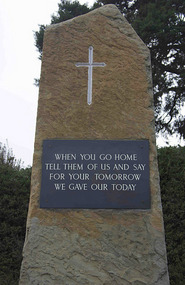
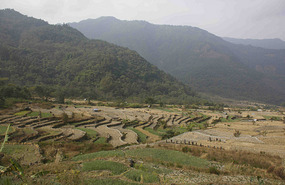
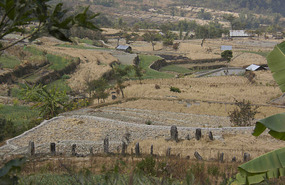
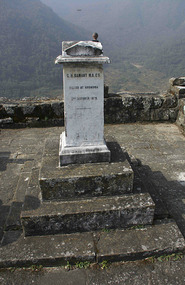
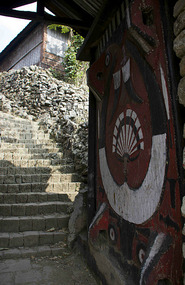
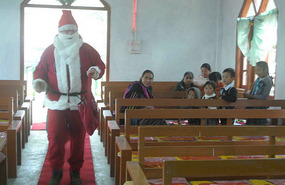







2025-05-22